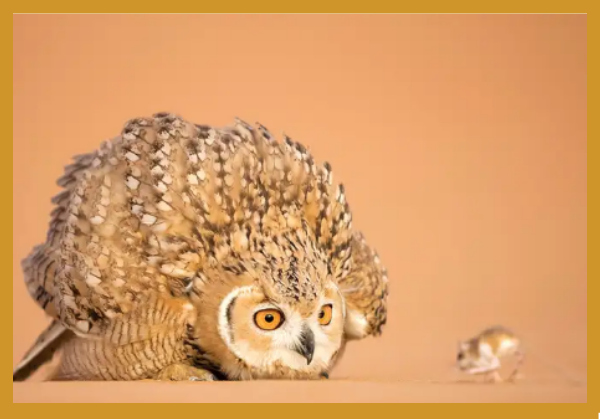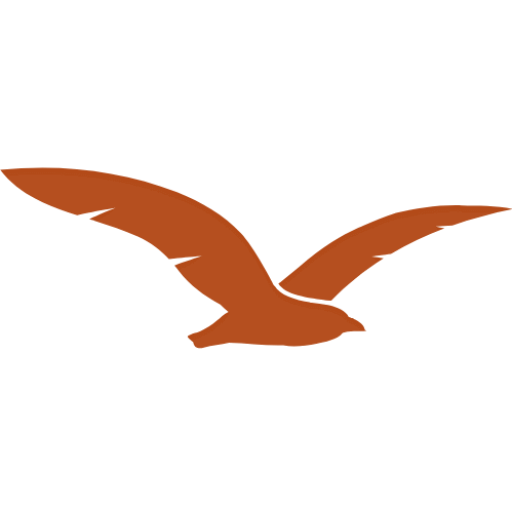In the heart of the desert, Where a bird lives for thousands of years this bird is Pharaoh Eagle-Owl or Bobu Ascalaphus, He is a type of desert bird that amazed humans with its amazing strength and skills in hunting and adapting to the harsh desert. He lives in The Deserts that exist in North Africa.

Nature rarely produces these types of birds because it has a different style of living and characteristics, which is strong and it has rather a large size. It has a large head and large eyes and a prominent ear tuft. We will see many things In this article like his characteristics, behaviors, his sound, and how he lives in the desert, and also I will introduce some pieces of information known only by indigenous people that live in the desert.
Distribution and Habitat:
This owl lives in deserts and semi-deserts in places where also live desert sparrows and Egyptian Nightjar in north Africa including some countries In Africa its range extends from Mauritania, Morocco, Algeria, and Tunisia in the west, through Mali, Niger, and Chad to Libya, Sudan, and Egypt he prefers to live always near the dunes or in the big holes high in the mountains far away from humans to build their nests. Its habitat is often found in empty spaces such as dry valleys in deserts and mountains.
It’s generally found lonely. It is an opportunistic predator, It feeds on reptiles, birds, and small mammals.
Although its number is decreasing and it is on the way to extinction, it is not given sufficient importance by the International Union for Conservation of Nature (IUCN).
Behavior And Ecology:
This owl is characterized by attracting friends and inviting them to communicate with others. It is very territorial and aggressive with other bird species, especially at the time of breeding.
The breeding time for this owl is from December to June and it’s put 2 to 3 eggs in the nest which can be in a hole or any place that empty and far away.
The male and female exchange each other to incubate the eggs and take care of the young, which lasts for eight weeks until they are able to hunt their own prey.
They are very skilled in hunting because they have very sharp claws and a strong beak, which gives them sufficient capabilities to hunt their prey such as small mammals, reptiles, birds, and insects, as they may sometimes attack a young child thinking that they are prey. Therefore, you must beware of them or guard your child against them.
The survival of this owl is threatened by several factors, including:
As we know this owl is threatened with extinction for several reasons, some of which are caused by humans and the associations responsible for birds, and some by nature and climate, let’s see how these factors can be a reason for the extinction of it.
One of these factors is climatic changes can affect the ecosystem and the extinction of some birds and other small mammals, thus the lack of food for this owl, and the second factor is habitat loss and degradation where the destruction of natural habitats agriculture and other human activities To the reduction or absence of other spaces for owls to live in and build nests for reproduction.
Also Hunting this owl is one of the reasons to extinct because in some regions people hunted for its feathers which they using it in decorations In clothes, headdresses, and other ornamental objects, and many other uses for this owl, like Ceremonial uses, Hunting and fishing, Collecting, etc.
Pesticides and pollution also can be a reasonable cause of their extinction, as exposure to pesticides and other pollutants in the air and nature can lead to the extinction of the owl and these pollutions will cause Disease to this bird by Spread of viruses such as avian influenza and West Nile virus, these are so dangerous for a life bird.
there are some natural reasons and factors but humans also should take care of these birds and try to don’t hurt them, because these beautiful creatures make our life a good vibe and make nature an aesthetic view.
Hunting And Survival Strategies:
to still survive in its natural habitat, it had to change some behaviors and hunting strategies like stealth and surprise, it is known for its silent movement and ability to ambush its prey from high spaces and its sharp vision makes its ability to do that in the darkness because it has excellent eyesight as it hunts effectively at night and prefers to hunt in complete darkness more than during the day because it can locate its prey from long distances even if it is at night.
this strange and powerful creature uses effective vocalization like shouts, barking, and screaming to communicate with other birds and intimidate their prey to hunt it easily.
Pharaoh Eagle-Owl Size:
The size of this owl is medium, with a total length of about 40–45 cm (16–18 in) and a wingspan of about 100–110 cm (39–43 in). The female is usually larger than the male, weighing around 500–700 g (17.6–24.7 oz), compared to the male’s 400–500 g (14.1–17.6 oz).
In terms of appearance, I am very impressed with its shape, as it has a large and round head and a short neck, the eyes are large, dark, and prominent, with a white “eyebrow” marking above them. That makes it like an owl and it is a mix between owl and eagle.
Its plumage is brown with white streaks, and the tail is dark brown, with white or light brown bars.
The eyes are dark brown or black and are surrounded by white “eyebrows”. The beak is large and powerful, with a hooked tip that is used to capture and kill prey.
FAQ:
What is the scientific name of the Pharaoh eagle owl?
His scientific name is Bubo Ascalaphus.
Where is the Pharaoh eagle owl found?
It is found in the deserts and semi-deserts of northern Africa, southwestern Asia the Middle East.
What does this owl look like?
It looks like the eagle, It is a mix between the eagle and the owl.
Are the Pharaoh eagle owl populations threatened?
Yes, It is threatened.
Can Pharaoh’s eagle owl feathers be collected?
No, it is regulated by wildlife conservation laws

